
This 5th edition published in 2009, reprinted 2012 by:
Marshall Cavendish Corporation
99 White Plains Road
Tarrytown NY 10591-9001
www.marshallcavendish.us
First published in 1996 by Times Editions Pte Ltd, reprinted 1996, 1997, 1998, 1999; 2nd edition published in 2000, reprinted 2000; 3rd edition published in 2003, reprinted 2003; 4th edition published in 2006.
2009 Marshall Cavendish International (Asia) Private Limited
All rights reserved
No part of this publication may be reproduced, stored in a retrieval system or transmitted, in any form or by any means, electronic, mechanical, photocopying, recording or otherwise, without the prior permission of the copyright owner. Request for permission should be addressed to the Publisher, Marshall Cavendish International (Asia) Private Limited, 1 New Industrial Road, Singapore 536196. Tel: (65) 6213 9300, fax: (65) 6285 4871. E-mail:
The publisher makes no representation or warranties with respect to the contents of this book, and specifically disclaims any implied warranties or merchantability or fitness for any particular purpose, and shall in no events be liable for any loss of profit or any other commercial damage, including but not limited to special, incidental, consequential, or other damages.
Other Marshall Cavendish Offices:
Marshall Cavendish International (Asia) Pte Ltd. 1 New Industrial Road, Singapore 536196  Marshall Cavendish Ltd. 5th Floor, 32-38 Saffron Hill, London EC1N 8FH, UK
Marshall Cavendish Ltd. 5th Floor, 32-38 Saffron Hill, London EC1N 8FH, UK  Marshall Cavendish International (Thailand) Co Ltd. 253 Asoke, 12th Flr, Sukhumvit 21 Road, Klongtoey Nua, Wattana, Bangkok 10110, Thailand
Marshall Cavendish International (Thailand) Co Ltd. 253 Asoke, 12th Flr, Sukhumvit 21 Road, Klongtoey Nua, Wattana, Bangkok 10110, Thailand  Marshall Cavendish (Malaysia) Sdn Bhd, Times Subang, Lot 46, Subang Hi-Tech Industrial Park, Batu Tiga, 40000 Shah Alam, Selangor Darul Ehsan, Malaysia
Marshall Cavendish (Malaysia) Sdn Bhd, Times Subang, Lot 46, Subang Hi-Tech Industrial Park, Batu Tiga, 40000 Shah Alam, Selangor Darul Ehsan, Malaysia
Marshall Cavendish is a trademark of Times Publishing Limited
eISBN: 978 981 4435 90 1
Please contact the publisher for the Library of Congress catalogue number
Printed in Singapore by Times Printers Pte Ltd
Photo Credits:
All black and white photos from the author except pages 26, 6465 (alt.TYPE/REUTERS); pages ix, 3, 4, 33, 37, 39, 5455, 70, 94, 104105, 109, 110, 111, 113, 115, 116, 118, 120, 127, 131, 134, 149, 160161, 167, 170, 171, 175, 177, 188, 195, 203, 215, 221, 233, 234, 251, 252, 255 (Photolibrary). All colour images from Photolibrary except bc (Getty Images).  Cover photo: Photolibrary
Cover photo: Photolibrary
All illustrations by TRIGG
ABOUT THE SERIES
Culture shock is a state of disorientation that can come over anyone who has been thrust into unknown surroundings, away from ones comfort zone. CultureShock! is a series of trusted and reputed guides which has, for decades, been helping expatriates and long-term visitors to cushion the impact of culture shock whenever they move to a new country.
Written by people who have lived in the country and experienced culture shock themselves, the authors share all the information necessary for anyone to cope with these feelings of disorientation more effectively. The guides are written in a style that is easy to read and covers a range of topics that will arm readers with enough advice, hints and tips to make their lives as normal as possible again.
Each book is structured in the same manner. It begins with the first impressions that visitors will have of that city or country. To understand a culture, one must first understand the peoplewhere they came from, who they are, the values and traditions they live by, as well as their customs and etiquette. This is covered in the first half of the book.
Then on with the practical aspectshow to settle in with the greatest of ease. Authors walk readers through topics such as how to find accommodation, get the utilities and telecommunications up and running, enrol the children in school and keep in the pink of health. But thats not all. Once the essentials are out of the way, venture out and try the food, enjoy more of the culture and travel to other areas. Then be immersed in the language of the country before discovering more about the business side of things.
To round off, snippets of basic information are offered before readers are tested on customs and etiquette of the country. Useful words and phrases, a comprehensive resource guide and list of books for further research are also included for easy reference.
INTRODUCTION
A book about Swedenit ought to be easy to categorise the ups and downs of Swedish living, culture, language and people. After all, it is a very small country with only 9 million people, and is one of the most homogeneous populations in the world. Swedes are tall, blonde and blue-eyed, and their country is very cold and snowy, with polar bears and reindeer. Everyone skis and plays ice hockey, and is a pacifist, not liking confrontation. Of course it is one of the sexiest nations on earth, as everyone knows from tales of Swedish models and au pairs, and morals are a little looser. Other facts about Sweden that everyone knows are how expensive everything is there, how left-wing Swedish politics are, that Sweden welcomes political refugees and contributes greatly to international aid, that Swedish food is bland and boring and that Swedish culture is a mix of depressing, deep hidden meaning type films la Bergman and light bouncy pop music like Abbas and The Cardigans.
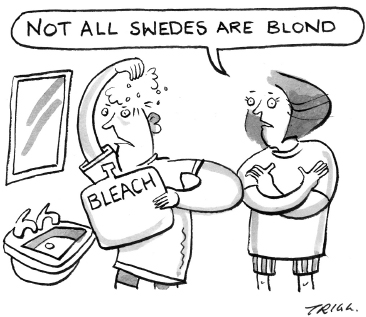
But the reality, as always, is different. Describing and learning about Sweden is much more complicated than the image of blondes from a cold country would imply! In this book, you will find lots of information on the myths and realities of Swedish people, politics, geography, culture and everyday living. I hope that it will be helpful to anyone planning to move to or travel within Sweden, or to anyone who just needs to know more about the country.
You will learn about the dark-haired, dark-eyed Swedes, the indigenous Sami people and the many immigrants who have settled in Sweden. You will read about the long sunny beaches in the south, the rocky coastline on the west coast and the great forests and long winters in the countrys north. No, there are no polar bears anywhere in Sweden, but the wildlife is varied and there are still large areas of unspoiled habitat and wilderness in Sweden, unlike most of the rest of Europe.
Not everyone skis; football is very popular and Sweden has qualified for most World Football Championships. Swedes surf, golf, swim, run and, of course, play tennis. In fact they enjoy the same sports as most other Western nations and excel in many of them. It is true that Swedes are proud of their neutral status and most avoid confrontation. However, they are also proud of their bloodthirsty warrior history and of the Viking times, and volunteer for United Nations armed forces around the world. Many Swedes are sexy. Many Swedes are not. Some have looser morals and some very strict, although it is true that certain behaviour considered immoral in other countriessuch as living together without being married and divorceis acceptable in Sweden.
And so on. There is much which is homogenous in Sweden compared with, for example, the United States, but there is still a wealth of diversity which is what makes Sweden such a fascinating place to visit and a very pleasant place to live.
Next page
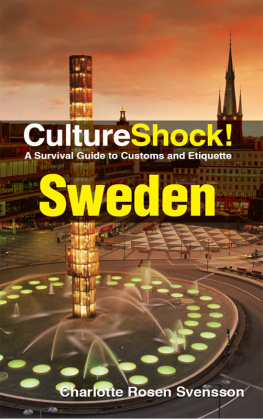
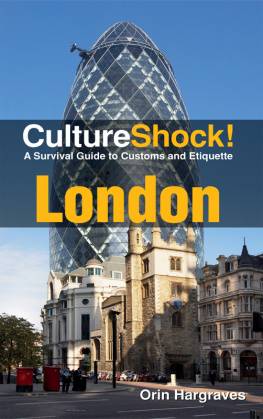




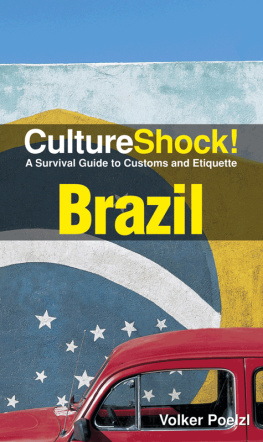
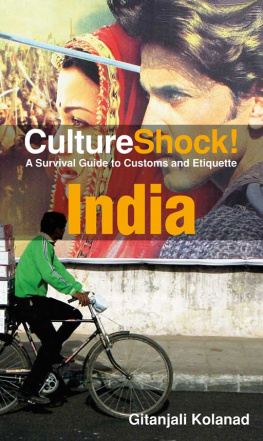
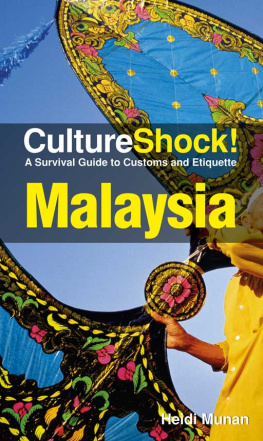

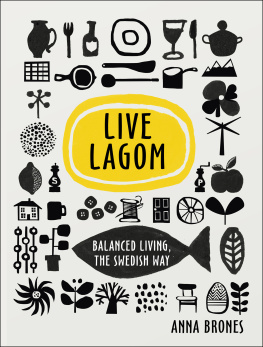
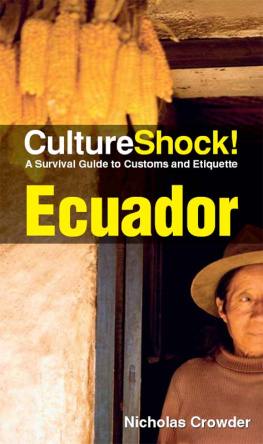


 Marshall Cavendish Ltd. 5th Floor, 32-38 Saffron Hill, London EC1N 8FH, UK
Marshall Cavendish Ltd. 5th Floor, 32-38 Saffron Hill, London EC1N 8FH, UK 